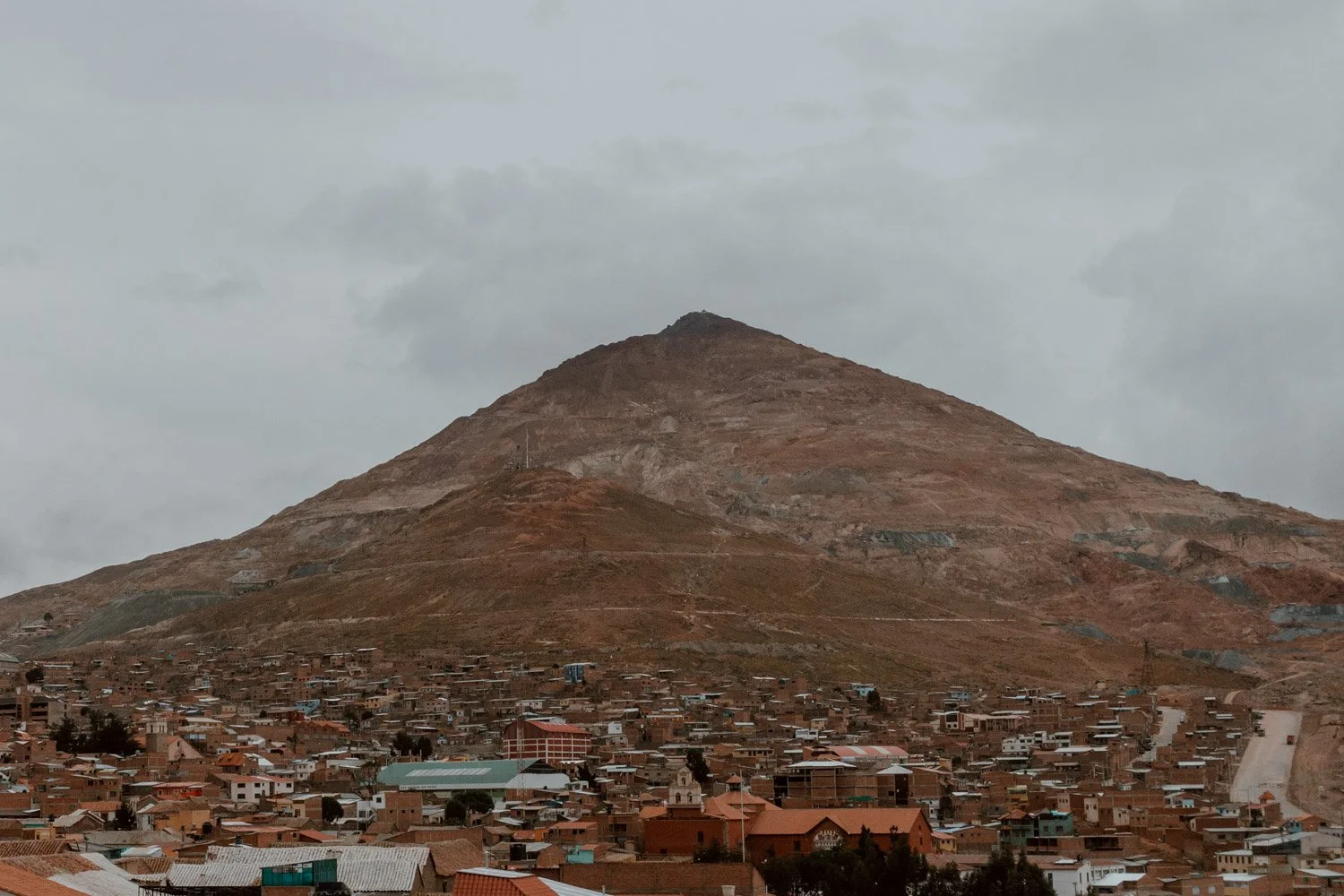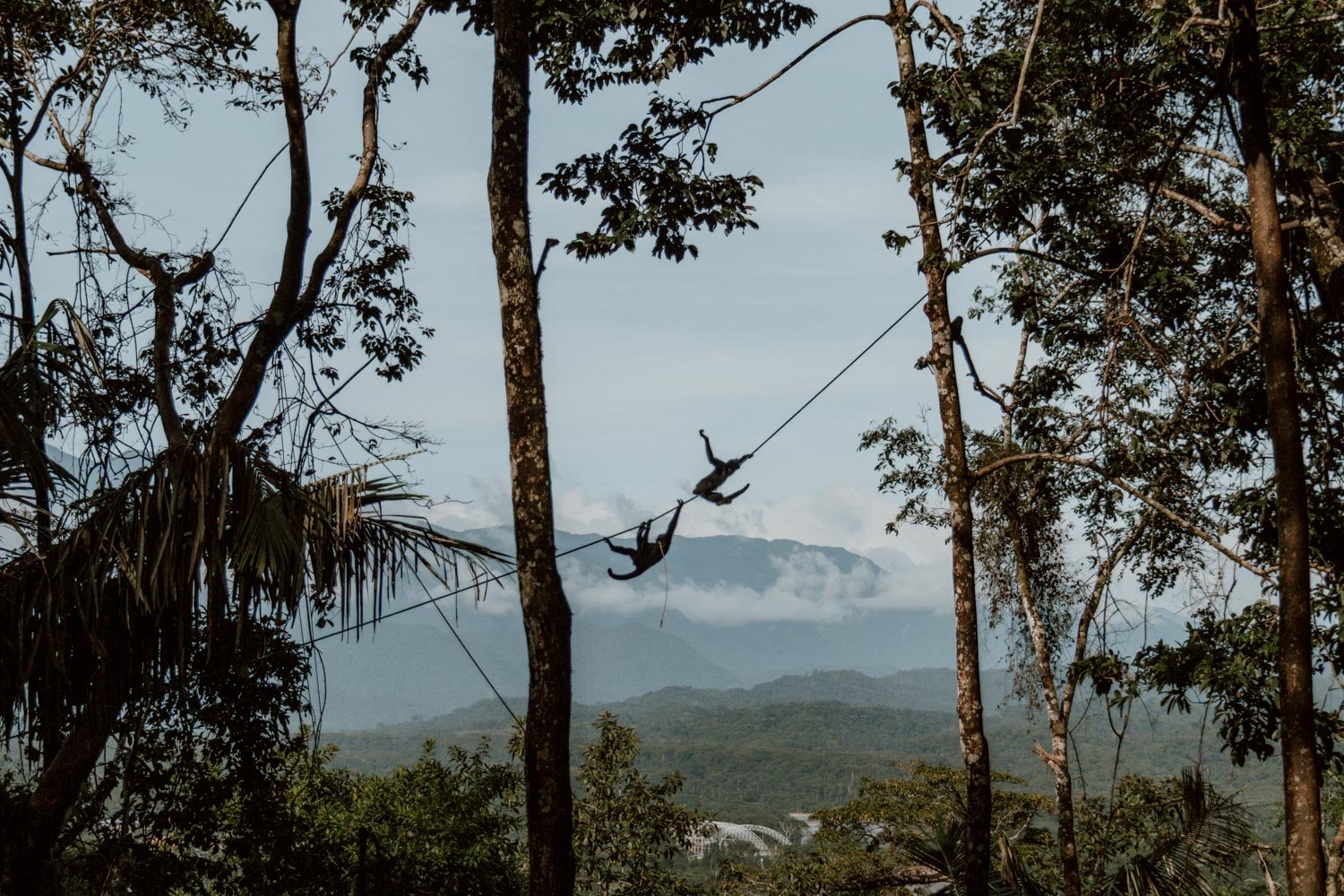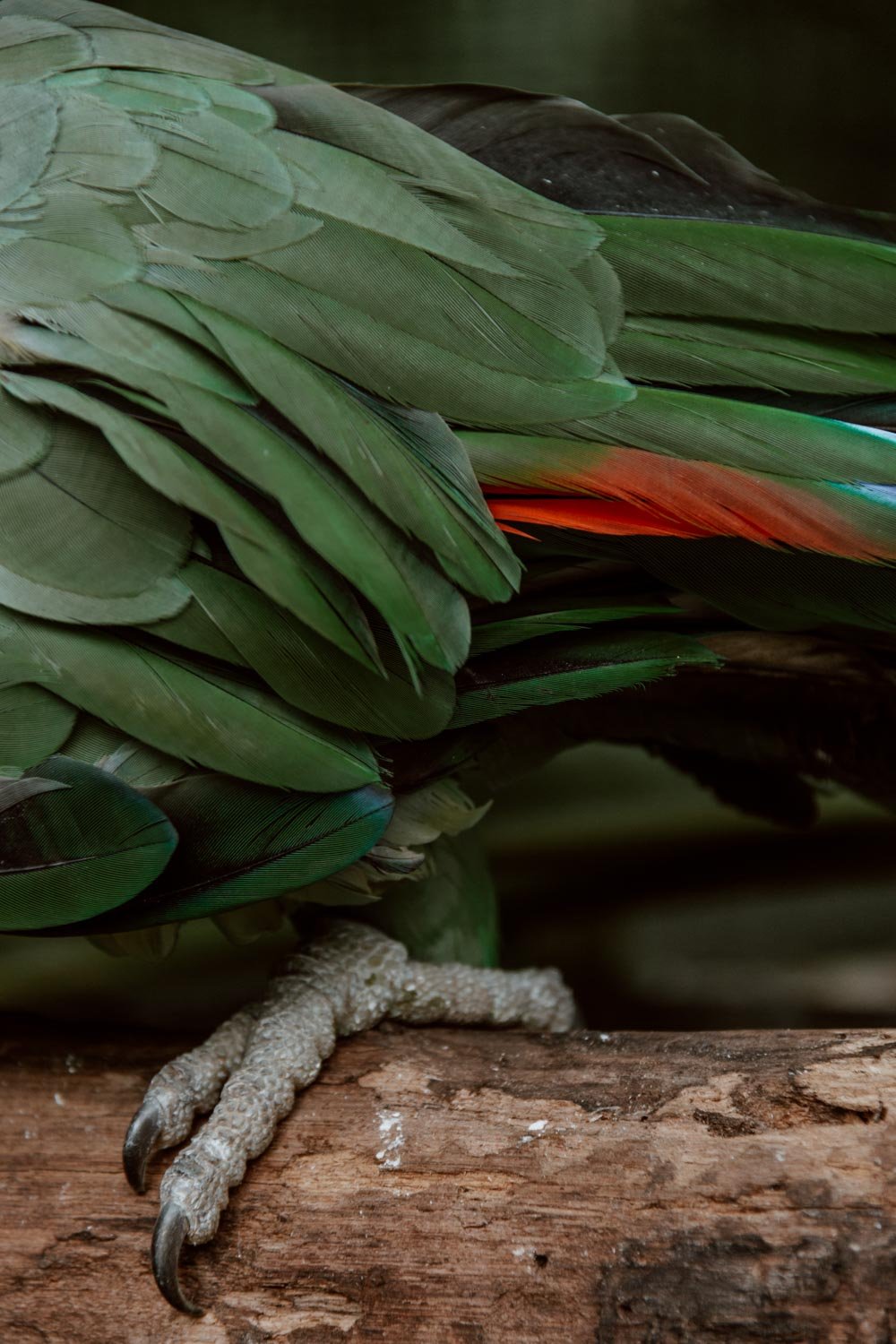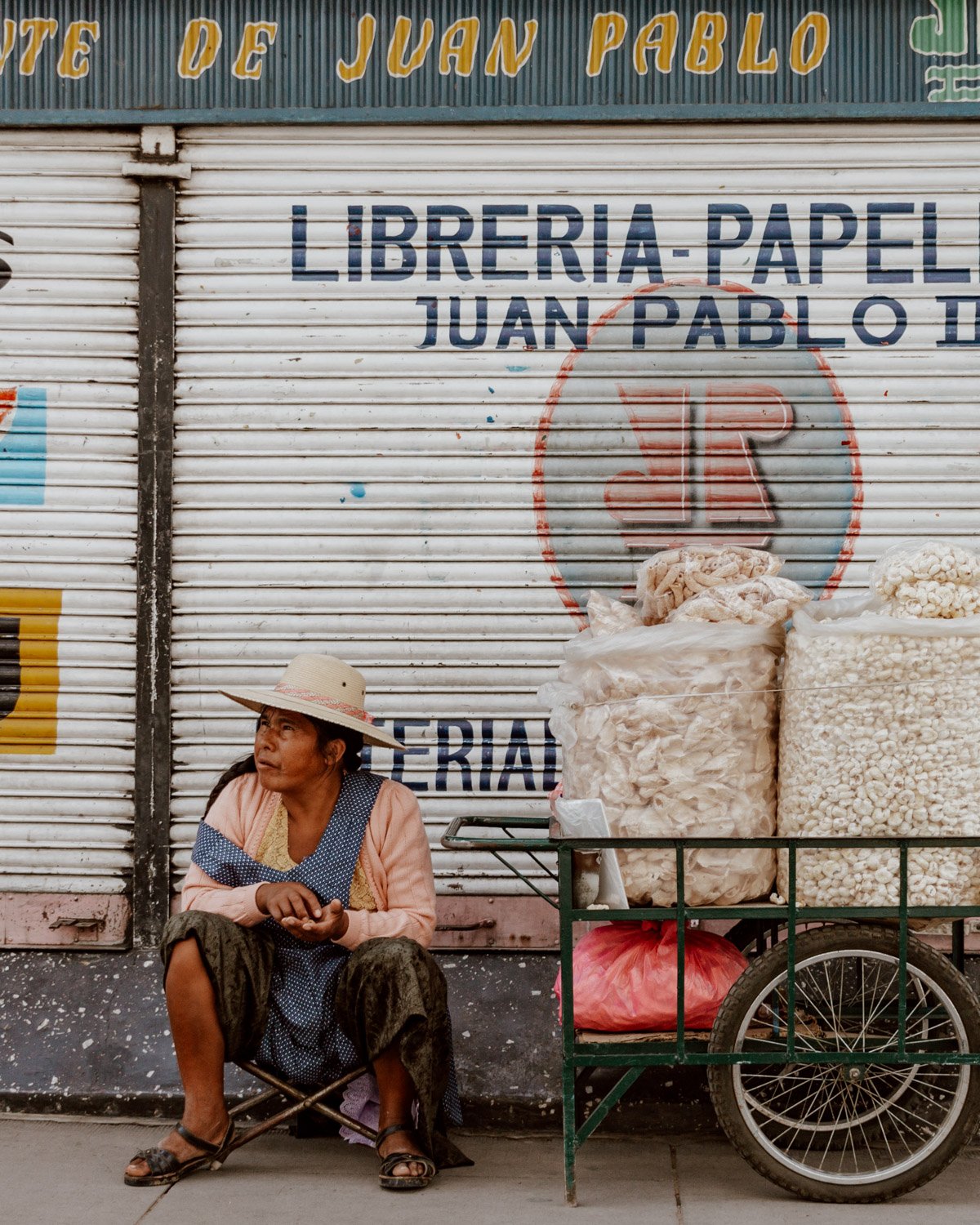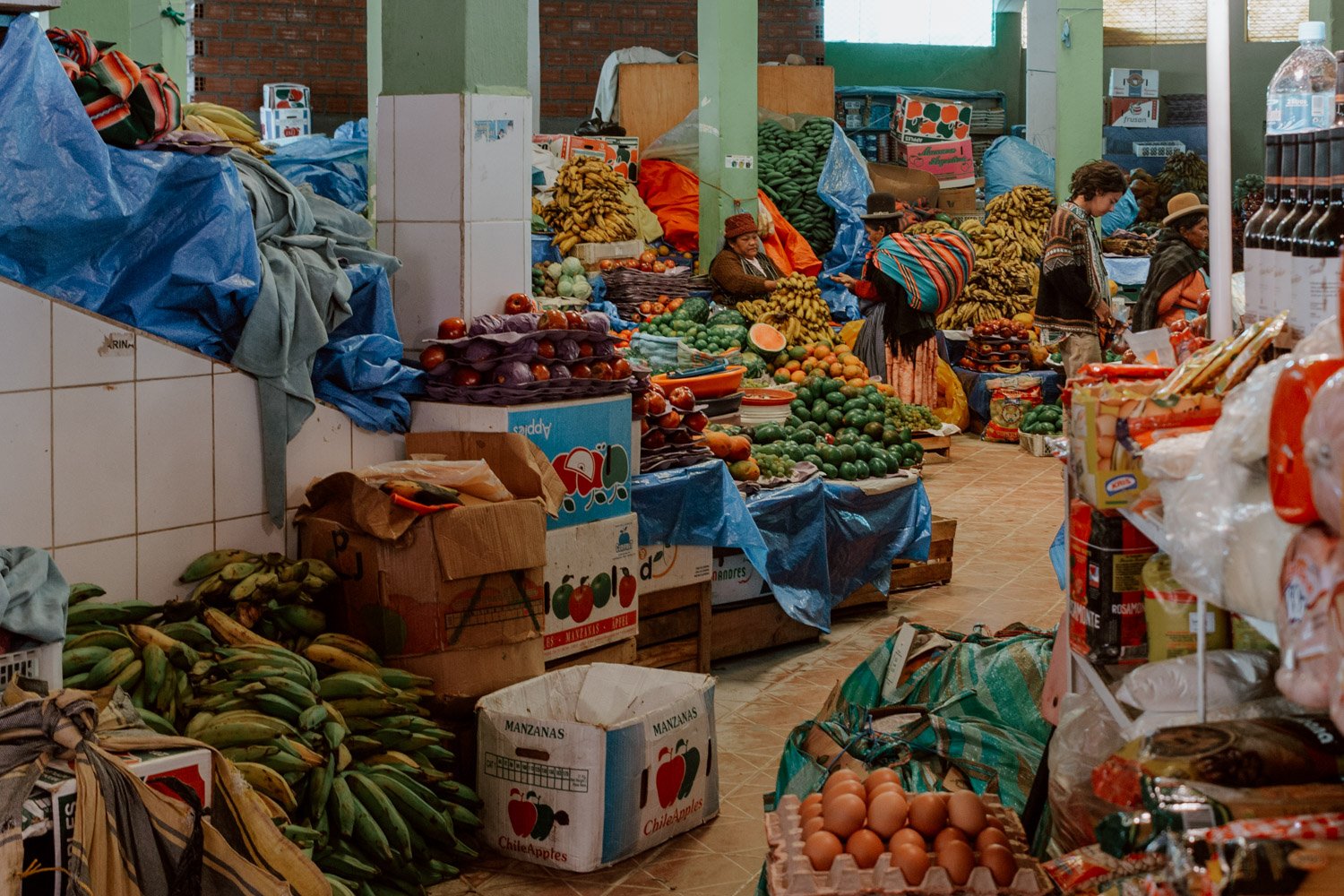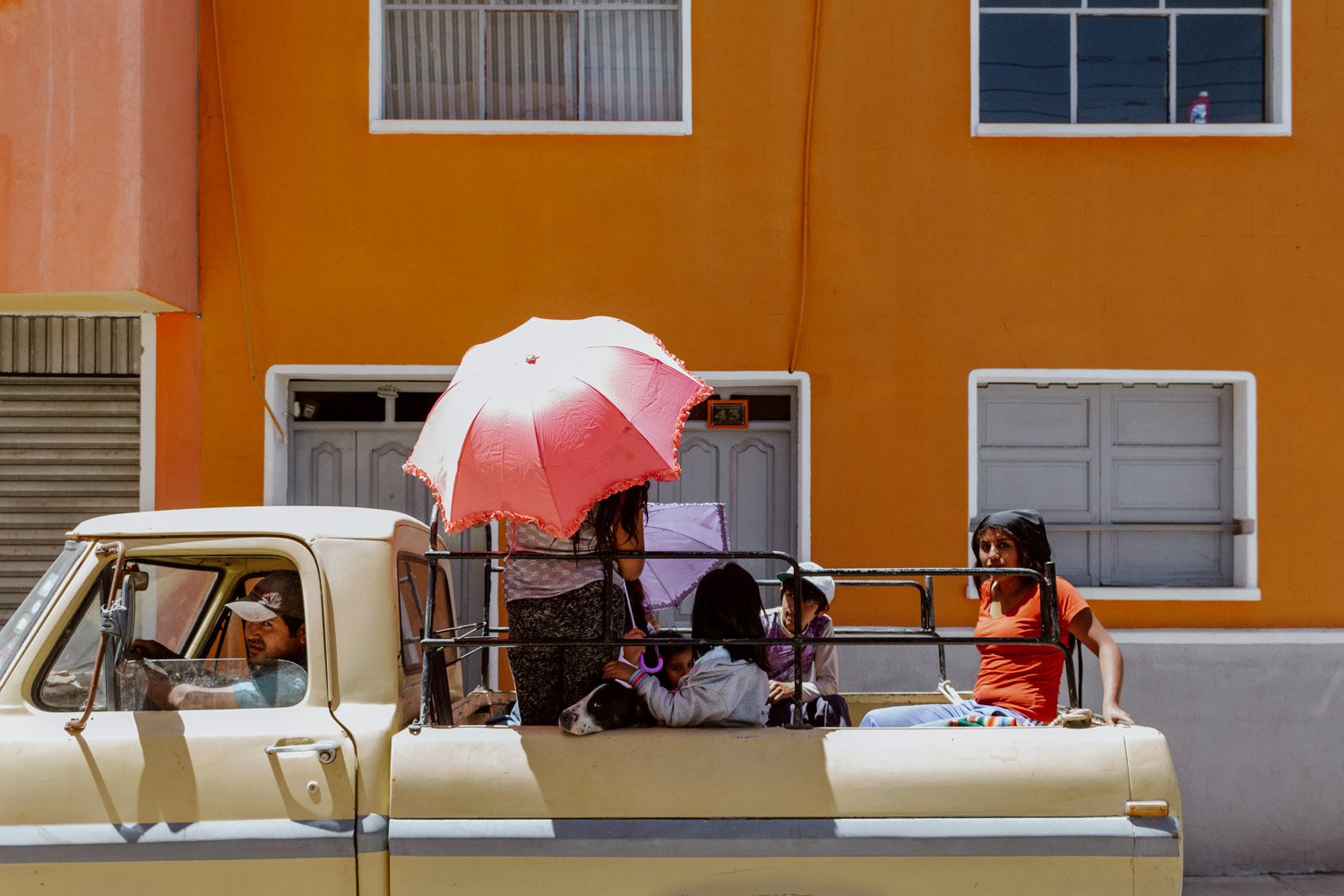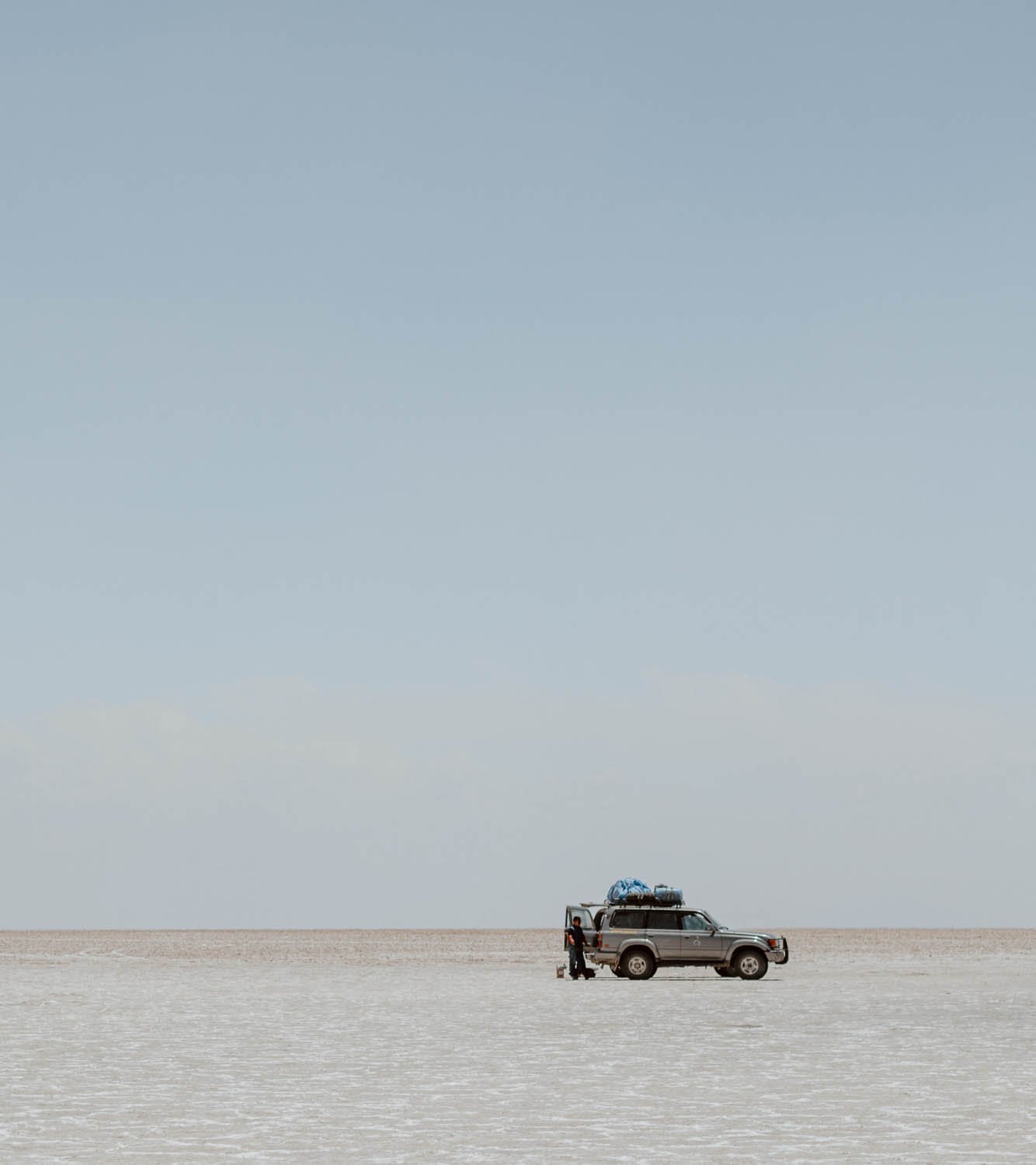Bolivia was a beautiful surprise for us.
What was supposed to be a three week taster of the land-locked Andean country, transformed into an unforgettable and spontaneous two month adventure - we just didn't want to leave.
However, travelling throughout the country does present challenges and quirks - some so unique to the Bolivian travel experience that we didn't encounter them anywhere else in South America! If you're lucky, these will simply provide an amusing anecdote or insightful cultural experience; if you're a little more unfortunate however, your entire trip could be affected.
So, to help your prepare, here are 18 incredibly useful things to know before you visit and travel Bolivia.
This post was fully updated in January 2023.
#1 you can't avoid altitude
El Alto - 13,615 ft. Potosi - 13,420 ft. Oruro - 12,159 ft. La Paz - 11,913 ft.
The highest point above sea-level in London is 804 ft.
Hardly surprising then that climbing a flight of stairs in Bolivia can get even the fittest of us out of puff, and have a significant impact on your first few days in the country.
We've written an entire post about how to deal with altitude sickness, so be sure to check that out before heading to Bolivia (or South America more generally) but in a nutshell:
- Altitude sickness can strike anywhere above 2,500m - even if you're not up a mountain!
- So many popular cities and hikes in South America are at altitude.
- Most common symptoms are a headache, nausea and tiredness.
- The best way to prevent it? Give yourself the time to acclimatise and ascend gradually! But staying hydrated, getting a good night’s rest and avoiding alcohol all help too.
- If the symptoms do not improve, or get worse, you need to descend to a lower altitude immediately.
An important word of warning however is that due to the risks associated with spending a significant amount of time at altitude, it really is vitally important that you don't travel here without insurance. Whilst many of us will only suffer from the odd headache, for some, things can get pretty serious, pretty quickly.
We recommend True Traveller (especially for Europeans), but you're confused about travel insurance, then be sure read this post first.
#2 you need to carry toilet paper everywhere
On our first night in the country, we found ourselves in a private double with a shared bathroom. It was good value and a welcome return to some privacy after only being able to afford dorms in most of Argentina.
Nature called in the evening and one of us went to visit the shared bathroom. There was no toilet paper around, so we went to ask for a new roll.
"That costs extra", said the receptionist.
We laughed, but it turned out she was completely serious. When you're paying 80B a night and yet they won't supply a 2B roll of toilet paper for the 20-odd people sharing the bathroom, it seemed a bit ridiculous.
But then, this appeared to be an approach deeply engrained within the Bolivian hotelier culture. In La Paz, on the Salt Flats, even in some restaurants, toilet paper was a precious and revered commodity! If you asked for some for your room, a small sheet would begrudgingly be given, if you were lucky. In other places, you had to pay. This wasn't the case anywhere else we travelled in South America.
So, dear traveller, never go anywhere in Bolivia - not even you own hostel or hotel bathroom - without some toilet paper in your bag!
#3 coca leaves are legit, cocaine is not
Unfortunately, a number of backpackers' idea of a Bolivian cultural outing will be to visit one of the 'secret' cocaine bars in La Paz, seemingly with out concern that 1. it's illegal, 2. they’re putting themselves in danger and 3. they’re perpetuating an industry which has crippled huge swathes of Latin America.
So, yeah, don't be one of those dicks.
Coca leaves however, which form the base of cocaine before it is cut with all sorts of rubbish (and were actually used in the original Coca-Cola recipes), are a hugely important symbol in Bolivian culture. Chewed incessantly by young and old alike or used as a tea, it is something which has been part of the practices of Aymara and Quecha people for centuries and, only in recent decades, has it come to be viewed as synonymous with the drug trade.
For travellers, coca leaves are actually the first thing any Bolivian will suggest to alleviate the symptoms of altitude sickness and bags of the dried leaves can be bought for a few bolivianos which you can either choose to opt to chew or brew.
Since Evo Morales came to power, its usage has been defended and proudly exalted as a part of the heritage of the country (watch this video of him at the UN defending its use), and if you’d like to gain a better understanding of the role coca leaves play in Bolivian society, you can visit the Coca Museum in La Paz.
Keep Reading // 13 Wonderful Things to Do in La Paz
#4 Nope, YOu can’t drink the water
Unfortunately, the tap water in Bolivia is not safe to drink (with the potential exception of Santa Cruz where it is apparently potable).
Because of this you have two choices: buy a lot of single use plastic bottles, or invest in bottle with an in-built filter. We use, and swear by, our Water-to-Go filter bottles which make any source of water safe for human consumption - you can find our review here.
Of course, in certain situations (like if you go hiking or are on a long travel day where filling up is not possible), you will still have to rely on the bottled water variety - in this case try to stay at least a little green by buying large bottles of water, rather than lots and lots of small ones.
Whilst it’s still not common place across the country, it’s also worth noting that some accommodations (especially the fancier ones) offer filtered water free of charge to guests, so be sure to fill up any empty plastic bottles / refillable bottles before you head out for the day.
Keep Reading // You can find our review of the top filter water bottles on the market here.
#5 The higher the altitude, the lower the boiling point
Yep. In La Paz, water boils at just 72 degrees celcius.
Right now, you're probably wondering why on earth that is an incredibly useful thing to know. Yet, for those of you that plan on preparing any of your own food, or even making a cup of tea it creates a couple of issues.
Firstly, food takes a REALLY long time to cook (up to 50 minutes for a pan of rice!), and secondly, as water needs to reach 100C to kill bacteria, there can be some issues with it not being properly sterilised.
Despite this, we continued to cook with tap water, but this may well have been a reason for the slightly dodgy stomachs we had during our stay in the country.
Be sure to know the best time to visit bolivia
Bolivia’s location in the Southern Hemisphere, its varying altitude (from some of the highest cities in the world to the almost sea-level Amazon Jungle) plus a very clear wet and dry season means that if you’re planning a trip across much of the country deciding exactly when to visit is not entirely straightforward.
However, with that said, for the average traveller the generally accepted best time to visit Bolivia is between the months of May and October. This is Bolivia’s dry season and you’ll be treated to nearly continuous blue skies (perfect for hiking in the Andes) and less chance of your travel plans getting derailed by bad weather. It’s also cooler and less humid in the jungle making this an ideal time for heading into the Amazon.
The only downside is that up in the highlands the weather will get frightfully cold, dropping well below freezing overnight.
Top Tip // If your trip to Bolivia has been inspired by an incredibly surreal photo taken at the Salt Flats, when flooding produces a mirror-like optical illusion it’s important to know that this only happens between December and March, at the peak of the rainy season. Definitely one for the photographers, but it’s important to note that when the flats are flooded crossing the flats becomes very difficult and you may struggle to find tours for your Salt Flats adventure.
Bolivia is Very Kind to Budget Backpackers
Brazil, Uruguay, Chile, Argentina (sometimes); it seems that the further south you head in South America, the more expensive it becomes, and the more budget backpackers can struggle to maintain their travel funds.
Bolivia then with its well-priced accommodation, cheap eats, and budget transport costs (more on those later) is where you should head if you want to explore a country with a huge variety of travel experiences, but need to make your savings stretch for as long as possible.
Top Tip // Whilst the ability to pay by card is increasing across the continent, with the exception of larger, more established accommodations and upmarket restaurants, in Bolivia cash is still very much king. Try and hang on to those smaller notes for stall holders and little purchases as getting change can prove challenging at the best of times!
#6 it's a great place to learn spanish
We are huge advocates of trying to learn at least a little bit of Spanish during your time in Latin America, and Bolivia is a very popular choice amongst travellers for picking up the language.
The lovely city of Sucre, with its spring-like climate and manageable altitude, is the most popular pick, whilst La Paz is also offers lots of options. Individual or group classes are available, and students can opt to have a home-stay via the school if they would prefer complete immersion.
Classes start at around $4 USD per hour for group classes and $7 USD for individual classes, although do try and negotiate for a discount if you are planning on taking classes for a week or longer.
Top Tip // If you’re wanting to pick up a little before you head out to Bolivia, or keep learning whilst you’re on the road, we recommend taking a look at this post where we discuss our favourite Spanish language resources and methods that really helped us.
#7 supermarkets don't really exist
Coming from the UK where there seems to be a Tesco Express on every corner, it came as quite a surprise to discover how rare supermarkets were in Bolivia.
The positive side of this? Bolivian markets are atmospheric, photogenic places full of character. For those of us more akin to the sedate and sanitised supermarket experience, your senses will be re-awoken with the sights and smells, as well as the incredible range of fresh fruit and vegetables available. It's also an excellent way for you to practice your Spanish.
The downside? Sometimes, you really really just want to have everything in one place, with pricing and without the need to barter. Also, from our two month experience, many stall holders have no problem ripping you off for every purchase.
Of course, the bigger cities such as La Paz and Santa Cruz do have the odd supermarket, usually floating around the richer areas, should you need one.
Keep Reading // What Things Cost in Bolivia
#8 the internet is generally quite poor
As digital nomads and bloggers an internet connection is our lifeline for work, but for all travellers we know that's it's essential to sometimes have a good and reliable connection so you can catch up with friends and family, sort out and book the next part of your trip or just have a day of Netflix and chill!
In Bolivia, this can be challenge.
Although almost all hostels in the main tourist spots and cities now come with wi-fi, the connection is very often unreliable and tediously slow. Whilst we have been informed that things have improved a little since our visit, in some places we're talking about 5 minutes of refreshing just to load a HTML version of our e-mail inbox.
So, if you work online, need to video chat or have some hefty files to download at any point during your stay in Bolivia, it makes sense to make a solid internet connection a priority when choosing your accommodation - usually reviews will alert you to this, but if in doubt it doesn’t hurt to contact your preferred hostel/hotel/airbnb.
Otherwise, a better connection may be found in gringo-centric cafes - just be sure to pick the one full of people on laptops!
#9 don't forget the eastern part of the country
Bolivia's best-known treasures are all clustered together in the western part of the country. The Salt Flats, La Paz and the Death Road, Carnival in Oruro, the Amazon and Lake Titicaca can all be found in and around there. Further, given their proximity to the borders with Chile and Peru, it's convenient for most travellers to only include that section of the country in their South America itinerary.
However, that means some unforgettable experiences in the eastern departments are, well, completely forgotten about. The Che Guevara trail and condor spotting are some of the highlights in and around the gorgeous countryside pueblo of Samaipata, whilst the national parks outside Bolivia's biggest city, Santa Cruz, are irresistible for nature lovers.
#10 transport is cheap....
We arrived in Bolivia after a few weeks of awful experiences with the Argentinian bus system - over-priced and poor quality were our two overriding conclusions from the various long haul bus journeys we took there.
So, it was quite a relief to find that the transport in Bolivia is cheap as chips.
If you ask around, then you will find perfectly fine options where the going-rate is less than 10B (£1) per hour of travel - meaning that a five hour journey won't have too big an impact on your daily budget.
The snag however is that the quality of public buses is, generally, very poor. Most are absolutely acceptable, but the journey is going to be something to be endured, rather than enjoyed. And, if you have a seat number on a busy bus route, don't be surprised if it's actually 'double booked' and someone is already sitting in your seat with a reservation for the same number!
A good option if you aren't looking for the cheapest fare out there, is to take an inter-city colectivo. These are available on some of the most popular tourist routes (i.e. La Paz to Corioco, Santa Cruz to Samaipata) and consist of a minivan, limited to seven passengers. Quicker, nicer and just a little more expensive than a bus, they're a good option.
Top Tip // Don’t drink too much liquid on your long bus journeys. Bathroom breaks on most journeys are rare and even if the bus theoretically has a toilet, you’re unlikely to want to use it.
#11 ...but the drivers are mental
However, the questionable quality of the buses is NOTHING in comparison to the sheer lunacy of some of the drivers.
Now, erratic or bizarre driving practices can sometimes be viewed as an interesting cultural quirk and something which you simply have to laugh at and endure. However, after weeks of placing our lives in the hands of complete idiots who have no regard for safety or concern for other road-users, we actually grew very angry and frustrated.
In short, the standard driving practice for a lot of Bolivians appears to be 'do the exact opposite of what you should'. On our trip, this resulted in over-taking three vehicles on a blind corner on wet, foggy day where visibility was about 10 metres, habitually driving on the wrong side of the road just for the fun of it, never using or wearing seat belts, taking corners at ridiculous speeds and generally giving absolutely no concern for anybody else on the road. And, reports of drunk and/or dozing off drivers on the Salt Flats and other tours are not uncommon. And don't even get us started on traffic in La Paz (hint - we actually saw cars nudge people and vehicles out the way)
And the most frustrating thing of all? Many Bolivians go to Copacabana every year to have their cars blessed by a priest so they can avoid traffic accidents - and the worst driver we had on the entire trip actually had his blessing banner proudly displayed in the vehicle!
Our tip? Do not be afraid to assertively, and sometimes aggressively, tell your driver to slow down. He might laugh at you or dismiss you, but keep at it and he may eventually listen.
Keep Reading // Our Complete guide to Copacabana and Lake Titicaca | What to Do, See and Know
#12 ...AND ROAD CONDITIONS OR STRIKES MAY RUIN YOUR TRIP
Right, we promise this is the last vehicular or traffic based tip. However, the roads and transport in Bolivia are simply too idiosyncratic (as well as pivotal to your trip's success) that we can't overlook their importance.
As Bolivia is a country with a number of development issues, its road network is poor. Although things have improved in the last decade (such as the 'Death Road' being replaced and a new highway linking Santa Cruz and Cochabamba), decent road conditions are still the exception.
Weather conditions can also wreak havoc on transport; landslides are not at all uncommon in Bolivia and this often renders a road impassable for a few hours or a few days.
However, landslide disruptions are nothing in comparison to the potential for a local or national protest! A common form of dissent in the country is for citizens to block the roads - be it with vehicles, bodies or landslides caused by dynamite.
During our stay, lorry drivers were protesting against tax rises and blocked roads leading in and out of La Paz, Cochabamba, Sucre and Santa Cruz (basically every single place you'd be planning on visiting or passing through). We needed to leave La Paz for Cochabamba but there were no buses operating the route because of the danger and difficulty of breaking through the blockade. Information was extremely difficult to get a hold of and nobody was aware of how long the national blockades would last.
We gambled on the strikes going on for more than a couple of days and booked a flight from La Paz airport (thankfully, these aren't massively expensive) and made it to Cochabamba. We found people there who had only three weeks of vacation time and had already lost five precious days, and others who had been forced to walk 20 kms because their bus had tried to take a different route but had been set upon by protesters and forbidden from passing; the strike would end up lasting another four days.
A reader of ours, visiting a month after, was affected by a completely different set of strikes and was forced to curtail her time in the country because, unless she booked flights everywhere, she would have not been able to travel.
So, to summarise, strikes and road closures are a significant issue for travellers in Bolivia. If and when they occur, it will be difficult to find good information but you need to be aware that they can last for days or weeks and shut down entire sections of the country's road transport system. If you're affected, internal flights are not unaffordable and may be necessary for you to get on to your next destination quickly (however, if there is a national strike, flights will book up quickly).
Lastly, if there is a strike, be very cautious about trying to pass through it as it is not unknown for protesters to be threatening or violent.
#13 hostels with kitchens are difficult to find
Followers of our first trip to Latin America (a two-year odyssey where we each lived on £15 per day) will know that one of the core tenets of our travel philosophy is cooking most of our meals in a hostel kitchen. Not only does it save us money and allow us to discover the best of a country's produce, it also allows us to make some of the meals that simply aren't available in some countries.
However, in Bolivia it was a real challenge to find a decent, affordable hostel with a kitchen. It's not impossible, but you simply will have to look around a little more than elsewhere in South America.
Keep Reading // Be sure to take a look at our 'Best Hostels in Bolivia' post, where we specifically note whether a hostel has self-catering facilities.
#14 you may not need three days at the salt flats…
The big Bolivian trip for travellers and tourists of all budgets is the Salt Flats. With the ever popular (and increasingly competitive) 'perspective' shots and the dreamy and surreal landscapes on offer, it isn't any surprise that it's an entrant on most of those 'things to see before you die' lists.
However, to enjoy the Flats, you really don't have to sign up for the popular 3-night/4-day jeep excursion. For us, we had already been in Chile's Atacama desert, so had seen many of the types of landscapes on offer, whilst in the latter stages of our two-year trip we just couldn't face multiple days of long-driving in a cramped jeep and enduring poor accommodation and bad food. Although this trip is certainly a highlight for a lot of travellers (and we're not trying to put you off it!), we also didn't view the cost of around $150 as something we could stomach.
So, we opted to instead take a day tour. It gave us about ten hours of time dedicated to driving, viewing and photographing the Salt Flats and meant we were back in Uyuni in time for a dirty burger and were able to spend the cold, cold night in our snuggly hostel bed.
Do we regret it? No, it was the right decision for us at the time (but it does mean we have return to Bolivia pencilled in for our future).
It is worth nothing however that if you are visiting Chile after Bolivia, then it does make good sense to take the 3-night jeep option, as this will double up as your transport to San Pedro de Atacama.
Multi-day Salt Tours traditionally leave from Uyuni but also depart from the charming, dusty southern town of Tupiza.
#15 service is often not with a smile
Normally, we would not write something like this, given that our own experiences may not necessarily reflect the truth of the matter.
However, throughout two months, we can definitively state the following about what to do in a Bolivian restaurant:
- Don't wait for anyone to bring the menu, go get it yourself
- Don't wait for anyone to come and take your order, go give it to them.
- Don't wait for anyone to come and give you the bill, go ask for it.
- Don't wait for anyone to come and collect your payment, go give it to them.
If you follow the above steps, you might just make it out in under an hour.
#16 you will probably stay in La Paz more than once
La Paz, the administrative capital of the country (Sucre is the actual capital) is likely to form an integral part of your itinerary. Not only is it worth at least a couple of days exploration, but it's also a main transport hub from which you will reach a number of northern and western Bolivia's main attractions.
Anyone heading up to Rurrenabaque to experience the Amazon is likely to depart from La Paz and will then need at least a night in the city to recuperate on their return. Depending on your route, visits to Lake Titicaca/Copacabana and Corioco may also see you returning to La Paz before moving on elsewhere.
So, our advice is to find a good hostel when you arrive in the city and keep going back to it for the odd night that you need to spend back in La Paz. Also, if you're heading to the Amazon, it is a good idea to ask to leave some of your luggage there (securely).
Keep Reading // Don't miss our in-depth guide to La Paz.
#17 Be aware of fake police scams
As with any country, there is always somebody trying to scam you. Unfortunately, in Bolivia that person may well appear to be a police officer.
The common ruse is to stop you on the street and state that they are an undercover police officer. They will then proceed to ask you for your passport to check your visa, before perhaps asking you to go to the police station with them. The aim here is for them to either do a runner with your passport, or worse still, once they've got you away from the street and 'on the way to the station' either rob you of other valuables or force you to an ATM to withdraw cash.
This is why it is so important to always carry only a photocopy of your passport (and the visa stamp page) with you at all times and never accompany an officer blindly. If you're suspicious - which you should be - show them your photocopy and, if they state that isn't enough, then ask them to contact the embassy or request a marked police car drives you to the station.
On the streets of Santa Cruz, we were asked to produce ID a couple of time. We always requested that we enter a restaurant on the same street and showed them our photocopies. These police officers were in uniform and appeared very official, however local sources state it is very unusual for undercover police officers to interact with tourists.
As in any situation, a little common sense goes a long way - but if you have any concerns, don't be afraid to question the officer and his credentials and make sure you get into a public and safe setting as soon as possible.
Keep Reading // For further information, be sure to take a gander at our guide to staying safe in Latin America.
#18 the standard tourist visa is 30 days
With the exception of some nationalities (namely the US and Israel), many backpackers will simply be able to get their passport stamp/visa when crossing the border. Bolivia has however opted to give visitors only 30 days in the country - which really isn't enough to experience all it has to offer.
Therefore, it's important to know that you can actually get another 60 days free of charge!
Here's our guide on how to do it in La Paz, although it is also possible to extend in cities like Sucre and Santa Cruz.
Side Note
We are well aware that some of the above points may sound a little harsh to those that have not visited Bolivia (or perhaps even to those that thoroughly enjoy these idiosyncrasies), however, many are things that we really wished we knew before we travelled to this beautiful country. Our intention is not to put off visitors to the region - in fact we encourage all visiting South America to spend a least a while in Bolivia - however, in a country that is still developing, knowing of its quirks beforehand can alleviate problems or concerns down the line and ensure a much better travel experience.



